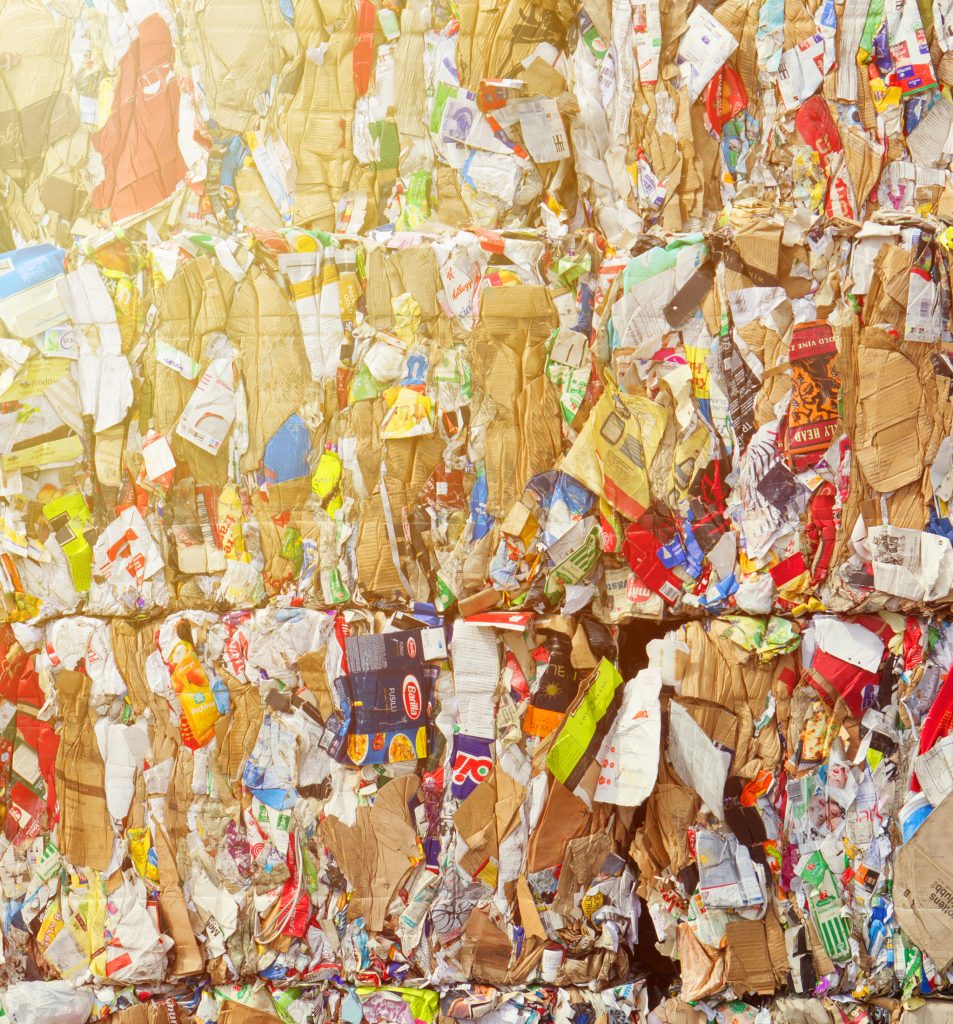Recovered fibre – an eco-friendly raw material
Recycling is important to the environment as it contributes to the efficient use of natural resources. In Scandinavia there is only one mill that manufactures packaging board from 100% recovered fibre and that is Fiskeby. One of many positive effects of manufacturing with recovered fibre is that it consumes significantly less energy than manufacturing with virgin fibre.
Fiskeby utilises the strength in recycled cartonboard
Recovered fibre-based board production consumes approximately 40% less energy than manufacturing based on virgin fibre. Every year we purchase about 180,000 tonnes of recovered fibre consisting of cartons, printing waste and office paper. The deliveries come from all over the country. About 80% comes from Sweden, 18% from the rest of Scandinavia and the remaining 2% from other countries. In Sweden, about 75% of all cartons are recycled.
Our packaging board is constructed of four layers with different characteristics. In order to create the desired properties we use different fractions of recovered fibre for the different layers. There are a variety of recovered fibre fractions on the market and we use a dozen of these. Household packaging represents a significant part of our raw material.

We separate the plastic from the packaging
Fiskeby is the only board mill in Scandinavia with the ability to use liquid packaging board and other plastic coated fibre based packages as raw material. We make use of all parts of the recycled raw material that we buy. Material that cannot be used in board production (plastic for example) gets separated and utilised in our energy production.
We have a centrifugal drum, a Fiberflow, which separates paper fibre from plastic in, for example, liquid packaging. The drum works like a giant washing machine. It mixes the recycled carton with lukewarm water. The paper fibre becomes raw material in the packaging board production while the plastic, the reject, is incinerated in our incineration boiler. The boiler then transforms the plastic into steam which we use to dry the cartonboard.
Recovered fibre meets all requirements in terms of quality and purity
Multiboard is manufactured in accordance with all the requirements for quality, hygiene, product safety and environmental safety. The raw material primarily consists of first generation recovered fibre, which is a very pure raw material after processing. We only use approved fibre fractions for food packaging products (in accordance with the German BfR XXXVI regulation and the SS-EN 643 – Paper and board – European list of standard qualities of recovered paper).
Producer liability
Producer liability is a regulatory framework that strives for an environmentally friendly and sustainable society.
What is considered waste at one stage can be viewed as a resource in another stage. Producer liability is based on the Polluter Pays Principle (PPP) and the Swedish government has decided to implement producer liability for packaging products and newspapers through the Swedish ordinance on producer liability for packaging (2006:1273).
A packaging cycle
The forest uses water, solar energy and carbon dioxide to produce the nutrition that it needs to live and grow. This is called photosynthesis.
Packaging board is made from the forest, but once a piece of packaging has served its purpose, it can be recycled and used to make new packaging products.
Recycling of recovered fibre contributes to a sustainable environment. The production of a new packaging product using recovered fibre consumes less energy and fewer chemicals. A fibre can be recycled up to seven times before it loses its useful properties. And once the fibre is worn out, it can be used to generate energy which reduces the consumption of fossil fuels.
By incinerating carton, we generate the water and carbon dioxide that the forest absorb through photosynthesis. The cycle is now complete!
Recycling tip:
- Empty the package and rinse it carefully.
- Fold the package to reduce size and odor.
- Assort loose corks from, for example, liquid packaging as plastic.
- Submit everything at your nearest recycling station.
